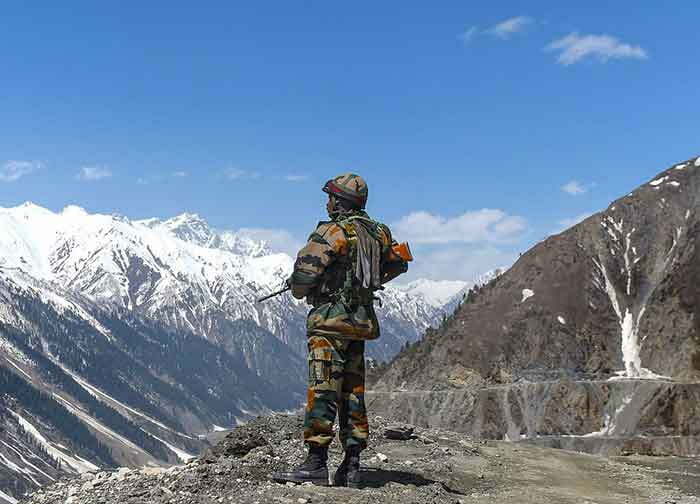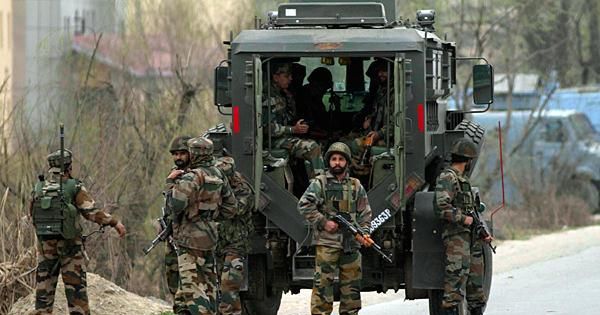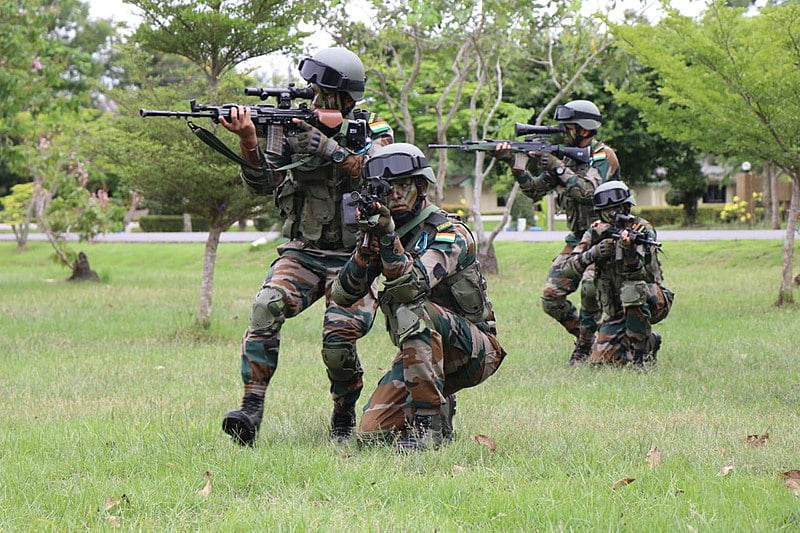
India today has one-sixth of the world’s humanity, and its people aspire for a prosperous and safe future in which they can pursue their dreams without fear. To achieve this it is very imperative to have a congenial external and internal environment in which the country could make its place in the world affairs and be shielded from global and regional risks thereby progressing towards prosperity and self-reliance. Therefore the management and the security of our borders are of paramount importance. One is reminded of the famous quote,” God made Land, Man Created Boundaries”.
An overview of India’s security environment makes very interesting reading. We share a very uneasy neighbourhood and have boundaries with six countries encompassing almost 15000 km of the extent with almost 10000 km of this with our acrimonious neighbours. Towards the West and North, we have unsettled borders which make the security of these borders very volatile. Also towards the East, there has always been a potential danger of refugee influx.
The nation faces extreme challenges today with its security of the borders. It is not easy for any nation to guard such a vast expanse of active borders. The borders also present us with a diverse terrain such as plains, deep gorges, steep mountains, deserts, thick forests, water-bound areas and snowbound areas (almost 6 to 9 months in a year). The climatic conditions are also a bigger challenge with temperatures ranging from minus 30 degrees Celsius to 55 degrees Celsius.
Apart from the extent of these borders, we also have unsettled boundaries with the dynamics of these differences in different regions. We have an International Boundary (IB) – 3300 km, Line of Control (LC) – 740 km, Actual Ground Position Line(AGPL)- 110 km and Line of Actual Control(LAC)- 3400 km. The demarcated section of our land border is classified as the International Border (IB), while the disputed part of the border with Pakistan is called the Line of Control (LC), and with China is called the Line of Actual Control (LAC). The Actual Ground Position Line (AGPL) defines the position of our troops in Siachen. All these have separate implications for our security environment. India fenced and flood-lit 461 km of Punjab’s border with Pakistan from 1988 to 1993. The 1,048 km Rajasthan- Pakistan border was fenced and floodlit by 1999. “Due to this, terrorism and another anti-national acts from across the border have been checked,” said a Parliamentary Standing Committee report on Border Fencing.
The IB and LC sector in Jammu and Kashmir is highly active, with regular firing from both sides, and Pakistan supported infiltration of terrorists into India. The LAC is contested, with Indian and Chinese patrols regularly facing off over intrusions across a border that have not even been delineated. On the LAC, the massive infrastructure development in Tibet has given a significant advantage to China in most areas. Border management along the Myanmar border remains poor, and this has permitted easy movement of insurgent groups that are mostly based in Myanmar.

At the same, we need to also guard our maritime boundaries which almost extend up to 7500 km. We share our maritime boundaries with six countries namely Pakistan, Bangladesh, Myanmar, Thailand, Indonesia, Srilanka and Maldives. There is never a clear demarcation of a maritime boundary in waters, therefore giving an opportunity for disputes.
As per international norms, each country has entitled an area of territory in the ocean which is contagious to its coastline. Therefore the belt of coastal waters can maximum extend up to 22.2 km(12 nautical miles) where no other country has any right to enter. There is also an exclusive economic zone (EEP) which is a maximum of 370 km (200 nautical miles) where the country can carry out its exploration, mining etc. Other countries can enter these waters but not indulge in any activity other than using the same as a passage to move on.
The vulnerability of our maritime boundaries is due to the increasing presence of the maritime assets of the PLA Navy in the Indian Ocean and their involvement in the string of pearls i.e Gwadar, Hambantota and Djbouti in our neighbourhood. Over the last ten years, PLA Navy flotillas in the Indian Ocean have become more capable with the deployments extending for longer durations. Unlike the agreements governing the handling of incidents along the LAC, no formal mechanism is in place to discuss details of how a situation at sea can be de-escalated and what rules of engagement must be laid down for military commanders at sea.
Currently, there are 15 agencies involved in managing coastal security, and this leads to jurisdiction and coordination problems. There is a need to review existing coastal regulations and the role of different agencies, in order to streamline their functioning. The Coastal Security Bill, proposing the setting up of ‘National Maritime Authority’, should be passed by the Parliament. The coast guard has a key role in security and should be strengthened. There is also a need to significantly enhance the security of ports and offshore assets/installations.
Military capability is a critical component of national power. While India wants peace with her neighbours, we also cannot be oblivious to nefarious designs of our neighbour Pakistan, the rising military power of China, and our own internal security challenges. We will only be assured of peace if we can visibly demonstrate our capability to defend our national interests through the use of force.
As analysed by military experts, future conflicts will see an increased blurring between the tactical, operational and strategic levels of war. Our military preparedness will have to cater for a range of response options from surgical strikes to an all-out conflict. Technology, information, cyber and space will increasingly gain importance, as will the requirement of smart and motivated soldiers to fight in this complex environment.
Today, there are significant capability shortfalls in the three services. Most of the army’s equipment is in the vintage category, and the induction of modern weapon systems is extremely slow. The air force is faced with reducing fighter strength and a lack of air-to-air refuelers, Airborne Early Warning and Control platforms, and trainer aircraft. The navy faces a capability gap in conventional submarines, unmanned aerial vehicles, mine countermeasures vessels, antisubmarine warfare, and naval utility helicopters. Our current budgetary allocations for defence, tardy procurement procedures, existing force composition, and decision-making structures pose a serious challenge to force modernisation.

The challenges are immense as apart from the border issues and our capability building, the threats related to terrorism, smuggling and the religion-political situation in our neighbourhood would need a constant watch. However most importantly what would be of consequence would be looking after the man behind the gun- our Indian Soldier who without blinking an eyelid is ready to lay down his life for the Nation. The nation in turn also needs to take care of him.
Ever since independence, the Army has been involved in helping sort out multiple insurgencies, terrorism, aid to civil authorities and has participated vigorously in stemming the rot and stabilizing the situation. It has also extended the reach of the state to inaccessible areas and, through egalitarian recruitment policies and secular conduct; it has contributed immensely to nation-building and national integration. The Indian Army has always risen to the occasion and delivered whatever it was mandated for. In times to come as they say, “When the going gets tough, the tough will get going”. The Nation awaits challenging times.

